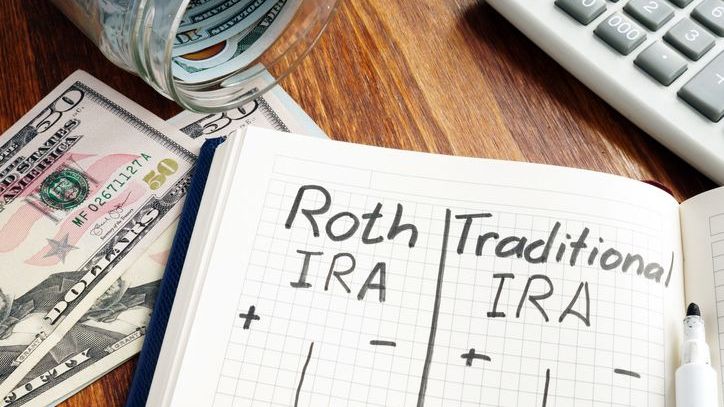A key decision associated with retirement planning involves choosing where to open and maintain an individual retirement account (IRA). As you contemplate how to choose an IRA account, you’ll want to consider how you want to manage your account or whom you want to handle it for you. Whether you’re considering a hands-on approach, utilizing technological solutions like robo-advisors or seeking the guidance of a financial advisor, each method offers distinct advantages and challenges tailored to different investment styles and knowledge levels.
How Will You Manage Your IRA?
Before you can select an IRA provider, you’ll need to consider how you plan to manage your account. The decision on whether to manage the IRA yourself, use a robo-advisor, or hire a financial advisor involves understanding the benefits and responsibilities for each option.
Do It Yourself
Opting to self-manage your IRA appeals to those who prefer direct control over their retirement investments. This approach allows individuals to handpick their investment options, such as stocks, bonds, mutual funds and exchange-traded funds (ETFs) based on personal financial goals and risk tolerance.
Self-management often results in reduced costs since it eliminates the need for paying management fees to advisors or automated services. However, it requires a robust understanding of financial markets and investment strategies. Effective self-management involves continuous education on market trends, regular portfolio reviews and strategic rebalancing to ensure alignment with your retirement objectives and risk profile.
Use a Robo-Advisor
For those who prefer a hands-off approach to managing their IRA, robo-advisors offer a compelling solution. These automated platforms use sophisticated algorithms to manage investments based on the user’s risk tolerance and financial goals. Robo-advisors provide several advantages, including lower fees typically ranging from 0.25% to 0.50% of managed assets, automatic portfolio rebalancing and tax-loss harvesting.
These features make robo-advisors an attractive option for individuals seeking efficient, low-cost and relatively hands-free investment management. The automation and simplicity of robo-advisors can help investors maintain a disciplined approach to retirement savings without the need to deeply understand the intricacies of portfolio management.
Hire a Financial Advisor
Engaging a financial advisor for IRA management is suited for individuals seeking personalized investment advice and comprehensive financial planning. A financial advisor can offer tailored strategies based on an in-depth assessment of your financial situation, retirement goals and risk tolerance. This option often includes benefits such as expert guidance on a wide range of financial matters, proactive portfolio management and strategic planning for other financial needs such as estate planning or tax considerations.
However, it is important to consider the potentially higher costs associated with professional financial advice. When choosing a financial advisor, you should verify their credentials, experience in retirement planning, fee structure and any past disciplinary actions to ensure a trustworthy and effective partnership.
Types of IRA Providers

IRAs have been a cornerstone of retirement planning since their inception in 1974 under the Employee Retirement Income Security Act (ERISA). Initially designed to encourage individuals to save independently for retirement, the variety of institutions offering IRAs has expanded significantly. Traditional banks and brokerages were the earliest providers, but as the financial landscape has evolved, so too have the options available to savers.
Today, credit unions and cutting-edge digital platforms with robo-advisory services have joined the ranks, offering diverse strategies and technologies to manage retirement savings. This broad spectrum of providers reflects not only advancements in financial technology but also a shift in investor preferences and needs over the decades.
Brokerages
Brokerages serve as a pivotal channel for individuals looking to open IRA accounts. These institutions act as intermediaries between investors and the securities markets, providing access to a wide array of investment options. Brokerages facilitate the buying and selling of stocks, bonds, mutual funds and other securities, which can be held within an IRA.
Within the brokerage industry, there are primarily two types of firms: full-service and discount brokerages. Full-service brokerages offer a comprehensive range of investment-related services, including personalized financial advice, portfolio management and research. They are typically suited for investors who prefer a hands-on approach to their retirement planning and may require more time and interest in managing their investments.
On the other hand, discount brokerages provide fewer services but at a lower cost. These firms are ideal for self-directed investors who are comfortable making their own investment decisions without much external guidance.
Banks and Credit Unions
Banks and credit unions also offer IRA accounts, providing a secure environment for retirement savings. One of the primary features of IRAs held at these institutions is the possibility of FDIC insurance, which adds a layer of security by protecting the deposits up to the applicable limits. Typically, credit unions might offer higher interest rates on IRA savings accounts when compared with banks, making them an attractive option for individuals focused on the growth of their retirement funds. The choice between a bank and a credit union for an IRA often depends on the comparative rates, fees, level of customer service provided and the typical investment products offered by each.
Robo-Advisor Platforms
Robo-advisors are an innovative and cost-effective option for managing investment portfolios – including IRAs. Wealthfront, Betterment and other robo-advisors will base investment decisions on the user’s risk tolerance and financial goals.
These platforms offer a hands-off approach to investing, making them particularly appealing to younger investors or those new to retirement planning. The lower fees and minimum investment requirements of robo-advisors, compared to traditional investment management services, provide an accessible entry point into retirement savings without sacrificing performance.
However, it is crucial to highlight the limitations of robo-advisors, including less personalized service and potential issues during market volatility.
Consider the Costs
When choosing an IRA provider, fees should be considered and evaluated. These can include account maintenance fees, annual charges, commissions and fund expense ratios. Such fees can vary significantly between providers and can impact the overall growth of retirement savings over time.
Commissions are fees paid for each trade made within the account, although many brokers now offer commission-free trades. Expense ratios, meanwhile, are ongoing fees charged by mutual funds and ETFs as a percentage of the invested assets. These costs can diminish the overall returns on investment if not managed wisely.
Finally, comparing costs between different IRA providers is fundamental to choosing the most suitable option. A practical approach includes examining whether the fees are flat or percentage-based, assessing transaction costs and considering any additional charges for services like fund management or account transfers.
Other Considerations When Choosing an IRA Provider

When selecting an IRA provider, it’s also important to consider the variety of account types available and how they align with your individual retirement planning strategy.
For example, a Roth IRA can be advantageous for those who anticipate being in a higher tax bracket during retirement. Roth IRAs are funded with money that’s already been taxed. While there is no tax deduction at the time of contribution, the account offers tax-free growth and tax-free withdrawals after age 59 ½, provided the account has been open for at least five years. This can be particularly appealing for younger professionals who expect their income to increase over time. If you’re interested in opening a Roth IRA, you’ll need to find a provider that offers them.
On the other hand, a self-directed IRA might be more suitable for seasoned investors looking for a wider array of investment opportunities beyond the typical stocks and bonds. This type of IRA allows individuals to invest in alternative assets such as real estate, precious metals and private placements. While the tax benefits of a self-directed IRA are similar to those of traditional IRAs, with potential tax-deductible contributions and taxed distributions, the flexibility in investment choices requires a deeper understanding of the associated risks.
Therefore, when choosing an IRA provider, it’s important to evaluate only the types of accounts offered in conjunction with your own financial situation and investment experience.
How Much Can You Save in an IRA?
In 2024, the contribution limits for IRAs will see an increase, allowing individuals to contribute up to $7,000, plus an extra $1,000 if you’re 50 or older.
Remember, contributions to a traditional IRA are deductible from taxable income, which can reduce the overall tax burden for the year. Moreover, the investments within an IRA grow tax-deferred. This means that taxes on dividends, interest and capital gains are postponed until withdrawal, typically at retirement when the individual may fall into a lower tax bracket.
The periodic increases in IRA contribution limits are typically adjusted for inflation. This ensures that the contribution limits maintain their real value over time, allowing individuals to continue to save adequately for retirement despite increases in the cost of living.
Bottom Line
Effectively managing your IRA is a pivotal component of retirement planning that requires a thorough understanding of the various management options and IRA providers available. Whether you opt for self-management, a robo-advisor or a financial advisor, each approach offers unique benefits tailored to different levels of investment knowledge and involvement. Similarly, choosing the right IRA provider – be it a brokerage, bank, credit union or digital platform – requires careful consideration of fees, services and investment options to align with your financial goals and retirement strategy.
Retirement Planning Tips
- If you own a tax-deferred retirement account like a traditional IRA or 401(k), you’ll need to start taking required minimum distributions (RMDs) from those accounts at age 73 (75 for people who turn 74 after Dec. 31, 2032). SmartAsset’s RMD calculator can help you estimate how much your first mandatory withdrawal will be worth and when it’s due.
- A financial advisor can help you plan for retirement and even manage your IRA for you. SmartAsset’s free tool matches you with up to three vetted financial advisors who serve your area, and you can have a free introductory call with your advisor matches to decide which one you feel is right for you. If you’re ready to find an advisor who can help you achieve your financial goals, get started now.
Photo credit: ©iStock.com/shapecharge, ©iStock.com/designer491, ©iStock.com/Delmaine Donson
Read the full article here
















